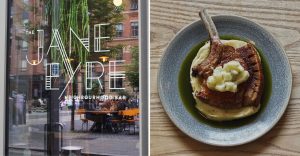It must be said that Manchester can sometimes be guilty of over indulging in its own history. Black and yellow Haçienda chevrons and ‘We Do Things Differently Here’ on a loop. Tucked subtly into Princess Street, however, The Alan is providing nuance with nostalgia as the most uniquely turned out hotel in the city.
Marrying over 170 years of industrial past with bespoke, present day design work, this China Town adjacent boutique has stripped back the interior to it’s roots, bringing a former cotton warehouse from 1850 into 2022 with resin and marble pairings, alabaster lighting and Scandinavian inspired minimalism.
“I just wanted to do something for Manchester that I thought was missing, really,” explains The Alan’s founder and CEO Amardeep Singh Chima, “I wanted to create something new and different from scratch so it’s then got the potential to roll out from city to city.”
Relaxed into one of The Alan’s meticulously designed barside booths, heavy duty glassware houses our pair of mineral waters, sat atop a hefty slab of marble more akin to something you would expect to be making up part of a baroque sculpture in a Roman square rather than the table in a Mancunian hotel.
Yet Amar and the collection of designers he has chosen to work with on restoring the pride of this Princess Street powerhouse are not in the business of ostentatiously overwhelming guests with unnecessary grandeur. If anything, they scale back the decadence with Northern grit. Literally, in some cases.
“Robin Glazby of Altrock did the main tables, the resin cast front on the restaurant. The inspiration for that was the M60,” Amar reveals as he does a bottom-to-top talkthrough of the building, “If you look closely there’s weeds in there, odd flowers and grit and gravel. If you get your magnifying glass out you’ll find cigarette butts and bottle tops in there too. It’s really cool.”
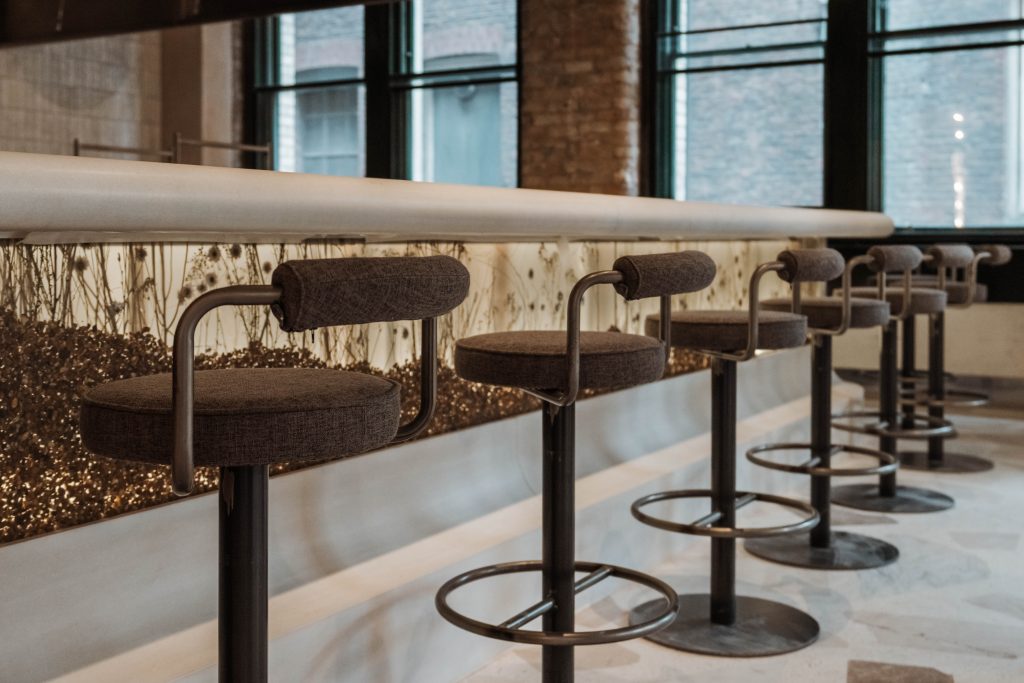
Laying part of a motorway at the entrance to your Jay Rayner approved hotel restaurant may seem like a curious design decision, but as Amar continues to explain over the course of our hour long discussion, locality and contrast reign supreme at The Alan.
“This whole lobby space was about tapping into all the different textures. So you have the luxury of the marble floor and then the pure back-to-stone uncovered walls and brickwork, these original fittings in the ceiling, very industrial. It works so much better than just going out and getting contract, off-the-shelf, mass made stuff. We want the feeling of uniqueness and craft to shine through.
“I’ve always worked with contrasts, I think contrasts work very well. We wanted to strip everything right back to the bare bones of what the building was but then put in these touches that were of a luxury nature; Marble floors, table tops. It was just always the intention to do something different that resonates with what the building is.”
The results are undeniable. There is an immediate zen that envelopes you upon taking your first few footsteps into the foyer of The Alan. All great hotels should immediately put you at ease as you arrive. Regardless of whether you’re embarking on a fortnight of luxurious pampering or sleeping off a bullshit ridden work conference. That knowledge that a crack team of professionals are dedicating all their energies, skills and charms to ensuring you are looked after in the finest manner possible is beyond compare.
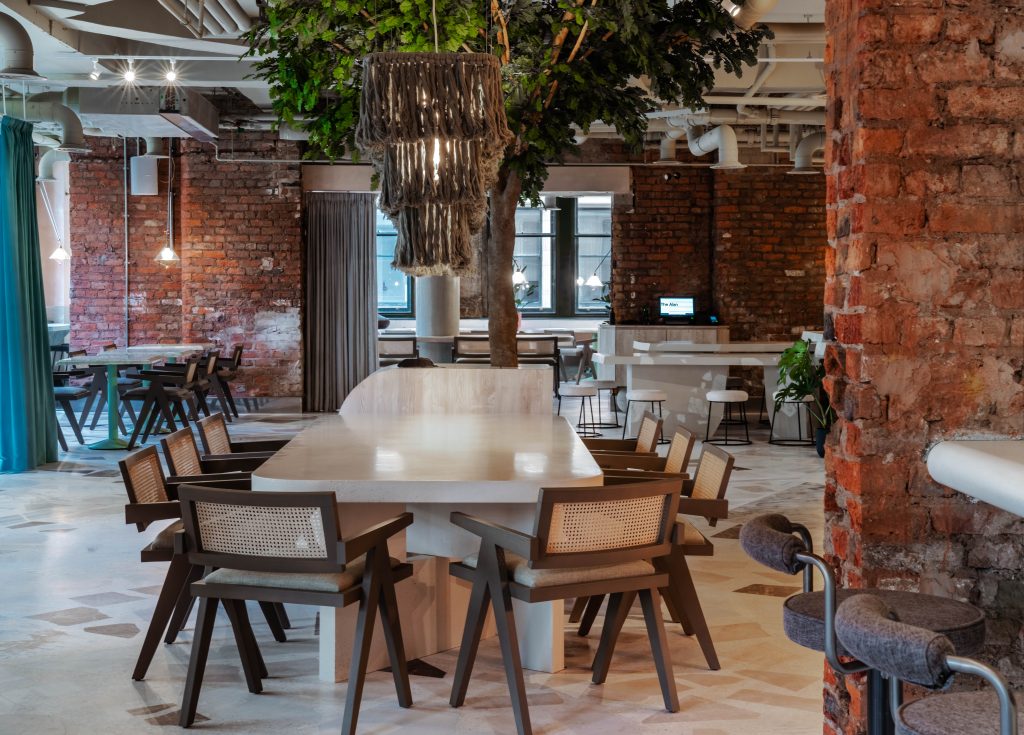
Stepping inside The Alan, before one of their effortlessly engaging members of staff has even had the chance to greet you, you feel refreshed. Imagine Mediterranean supermarket air conditioning at the height of summer. That level of refreshed.
Natural light cascades onto the aforementioned marble floor and up onto the original brickwork and brass light fixtures. The open plan interior is illuminated by the outside world. And it is from the immediacy of the very world outside The Alan’s windows where Amar and his team have attempted to source their materials from.
“It’s all about sustainability in this day and age. We looked into how we could not impact the environment while doing a fresh build. So the floor is made up of waste offcuts from a merchant, rather than going big and getting a brand new marble floor put in. So we’ve done them a favour by clearing their yard out and secondly, we’re reusing waste materials, so it works out best for everyone.
“The poor designer, though. We had these ideas, with it being such a mish-mash, where every single piece of marble should go. It was so detailed. He spent about a week doing this. He measured it all out, hundreds if not thousands of pieces. Two lorries came and we unloaded them off the pallets and realised none of the pieces were numbered or anything, so we just had to wing it after he spent a week doing all that. We just spent days trying to map out where all these pieces of marble should go. But it was worth it. Eventually.”
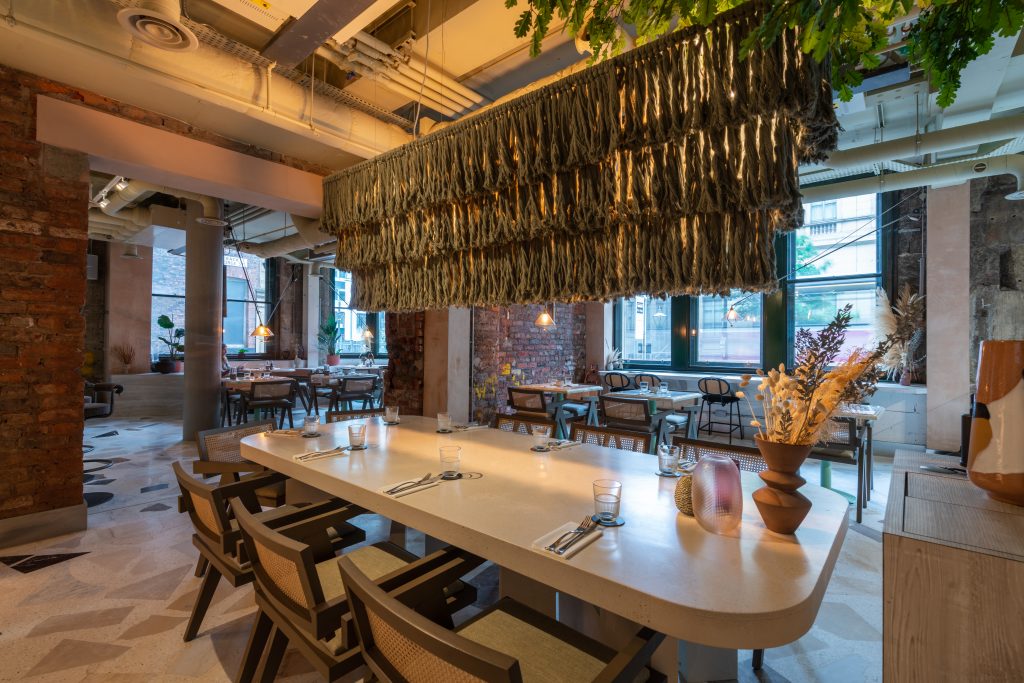
Sprawling, brain melting marble jigsaws aside, Amar was keen to reaffirm his commitment to The Alan becoming not only a signature spot in Manchester, but a beacon of Northern pride that can be replicated across the country. And maybe beyond.
“If you notice, everything comes from the south, places like The Hoxton and stuff. Why can’t we have a brand that originates from the north? Why’s everything so London centric? We’ve got amazing restaurants here, places like Hawksmoor, but everything’s always from London, from London, from London. Let’s do it the other way round.”
It doesn’t take long for you to imagine The Alan Paris, Amsterdam, Rome or New York becoming a reality. The nuance attached to local history is on point. Subtle rather than sledgehammering neon slogans into your cranium lest you briefly forget, even for a second, what city you happen to be laying your head in.
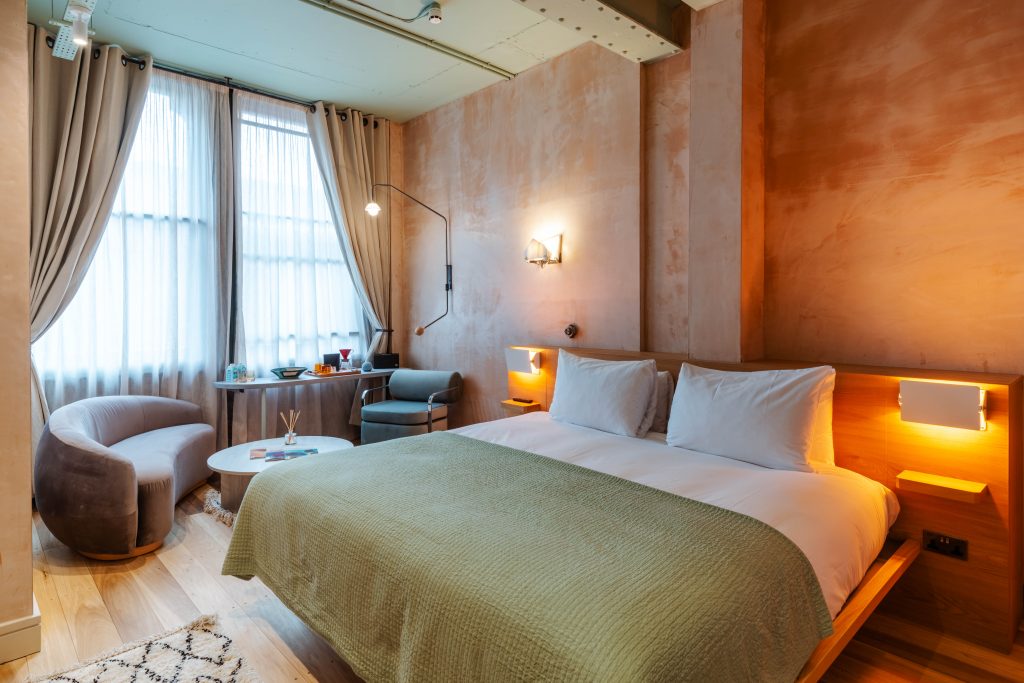
Amar namedrops the Hoxton and Ace Hotels several times during our chat – Boutique brands that house their luxury properties across Europe, North America, Australia and Japan between them. While The Alan is barely removed from its embryonic stages, the evolution of the space is already afoot, with plans for an event space rapidly developing.
“We’re currently undergoing some renovation in the basement. It’s part of our second chapter. That’s going to a venue in itself, which should be ready soon. It’s where the restaurant and the bar used to sit, but we’ve shelled it out and we have a space which mirrors the same size as this lobby.
“Down there it’s going to be anything goes. If you’ve got a record label launch party or a photoshoot location or for a fashion show or product launches, anything can happen. It’s an open space and our intention for The Alan is to host our own events there.”
“We’re looking at having art exhibitions and music nights. Even now up here in the lobby, we have local artists come in and display their works on the projector. The team has been slowly curating all of that, but we’re about to take all of this to the next level.
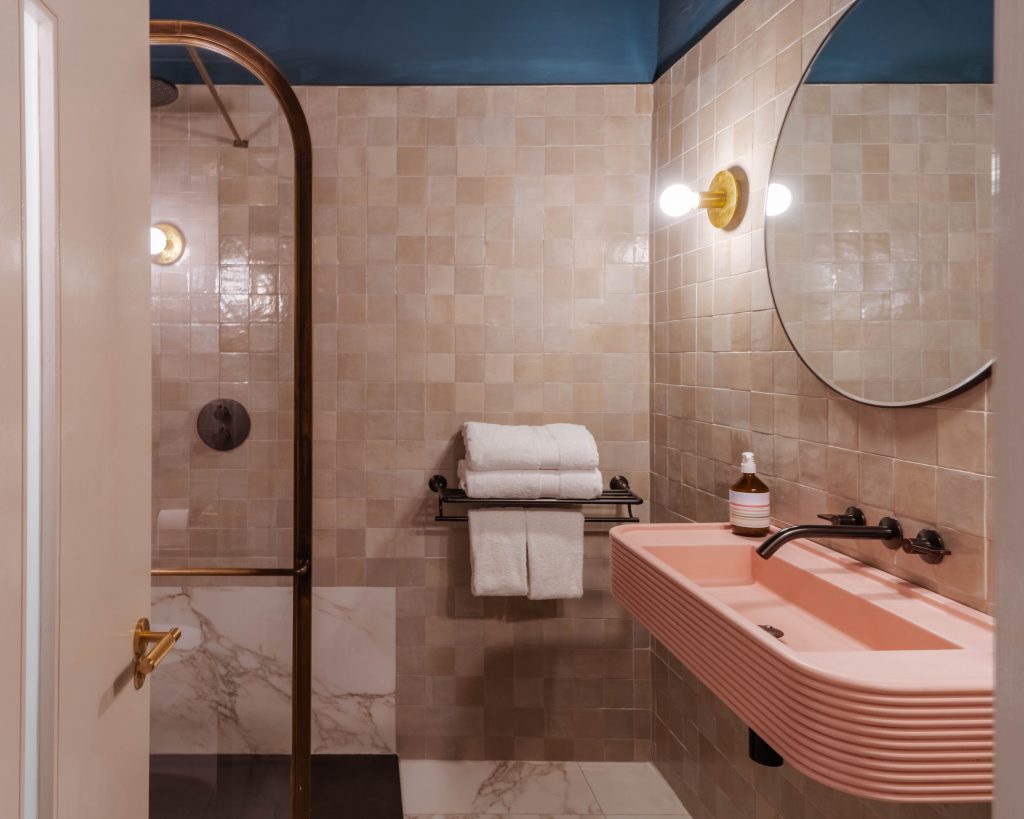
“The basement is going to be called Situ and once that’s open, with it’s own entrance down the side, it’s going to have its own look and vibe. It will have a separate presence with a website and instagram. It will be a venue within the venue.”
As our chat comes to a close, Amar might admit that he would like the music in the lobby to be ‘less downtempo’ but the reality is that him and his team have barely missed a beat since last summer. With Situ on the horizon for The Alan’s second chapter, we’re already desperate to know what chapter three could bring.

